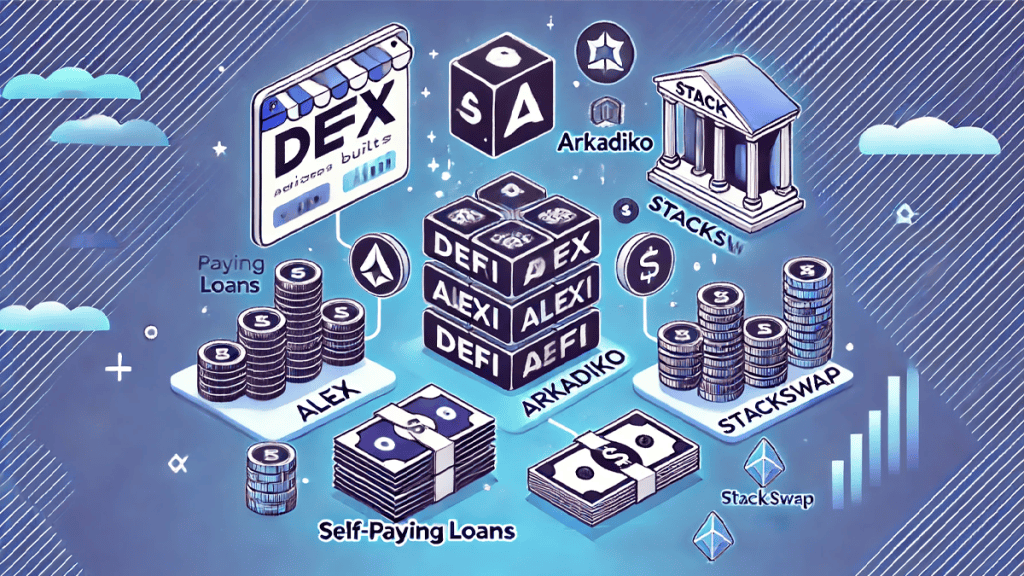
The Stacks blockchain has emerged as a significant innovation in the realm of blockchain technology, bringing the power of smart contracts and decentralized applications (dApps) to the Bitcoin network. Unlike traditional layer-2 solutions, Stacks operates as a unique blockchain connected to Bitcoin, leveraging Bitcoin’s security and finality to create a robust platform for developers and users alike. This review will delve into the key features, benefits, applications, and performance of the Stacks blockchain, providing a comprehensive guide for potential users and investors as of June 2024.
What is Stacks Blockchain?

Stacks, originally known as Blockstack, is a blockchain platform designed to enable smart contracts and dApps on Bitcoin. Utilizing a novel consensus mechanism called Proof of Transfer (PoX), Stacks connects to Bitcoin by anchoring its transactions to Bitcoin blocks. This ensures that every transaction on Stacks benefits from Bitcoin’s unparalleled security and finality.
The Nakamoto upgrade in 2023 significantly enhanced Stacks’ capabilities by enabling faster block production, reducing transaction times to approximately five seconds between Bitcoin blocks. This upgrade ensures that Stacks transactions are quickly processed while still benefiting from the security of the Bitcoin network.
Benefits of Stacks Blockchain
By anchoring to the Bitcoin blockchain, Stacks inherits Bitcoin’s security features, making it a highly secure platform for deploying smart contracts and dApps. The PoX mechanism allows for a decentralized and secure mining process, where miners use Bitcoin to mine Stacks (STX) tokens.
| Feature | Description |
|---|---|
| Security | Anchored to Bitcoin’s blockchain, ensuring high security and finality |
| Smart Contracts with Clarity | Predictable and secure programming language for dApps |
| Fast Transactions | Reduced transaction times with the Nakamoto upgrade |
| Integration with Bitcoin | Seamless connection with Bitcoin for DeFi and NFTs |
| Decentralization | PoX mechanism ensuring decentralized and secure mining |
Use Cases and Applications

Stacks has a growing ecosystem of applications spanning various sectors. Some notable projects include:
- Alex: A decentralized financial platform offering asset swaps, money markets, yield farming, and a launchpad for new projects. Alex leverages the Stacks network to provide these services with high security and efficiency.
- Arkadiko: This platform offers self-paying loans and a stablecoin (USDA) collateralized by Stacks tokens. Users earn Bitcoin rewards through the Proof of Transfer mechanism, gradually paying off their loans with the generated Bitcoin.
- Stackswap: A comprehensive DeFi platform that includes decentralized asset swaps, yield farming, and an NFT marketplace. Stackswap also provides a launchpad for new projects and a cross-chain bridge between Bitcoin and Stacks.
User Experience and Performance
Stacks has made significant strides in improving user experience and performance:
- Ease of Use: The Stacks ecosystem is designed to be user-friendly for both developers and end-users. Tools like the Hiro Wallet simplify the process of interacting with the Stacks blockchain, from managing STX tokens to engaging with dApps.
- Network Performance: With the Nakamoto upgrade, Stacks now offers fast transaction speeds and high network responsiveness. This makes it suitable for a wide range of applications, from DeFi to NFT marketplaces.
- Community and Support: Stacks boasts a vibrant community of developers, enthusiasts, and investors. The platform provides extensive documentation, tutorials, and support to help new users get started and build on the network.
Comparison with Other Blockchains
Stacks differentiates itself from other blockchains like Ethereum and Solana through its unique integration with Bitcoin:
- Security: While Ethereum and Solana rely on their own consensus mechanisms, Stacks leverages Bitcoin’s security. This makes Stacks particularly attractive for applications requiring high security and trust.
- Decentralization: Stacks’ use of PoX and its anchoring to Bitcoin ensure a high level of decentralization, similar to Bitcoin itself, which is not always the case with other blockchains that may have centralized elements.
Conclusion
The Stacks blockchain stands out as a pioneering solution that brings the power of smart contracts and dApps to the Bitcoin network. With its robust security, fast transaction speeds, and growing ecosystem of applications, Stacks offers a compelling platform for developers and users. As we look towards the future, Stacks is well-positioned to play a significant role in the evolving landscape of blockchain technology. Whether you’re a developer, investor, or simply a blockchain enthusiast, Stacks is a platform worth exploring for its innovative approach and potential for growth.
FAQ
What is Stacks?
Stacks is a blockchain platform that enables smart contracts and dApps on Bitcoin through the Proof of Transfer consensus mechanism..
How does Stacks integrate with Bitcoin?
Stacks connects to Bitcoin by anchoring its transactions to Bitcoin blocks, leveraging Bitcoin’s security for its operations..
What are the key benefits of using Stacks?
High security, fast transactions, integration with Bitcoin, and the use of the Clarity programming language for smart contracts.
References
- Coin Bureau. (2024). Stacks (STX) Review: Making Bitcoin Programmable. Retrieved from https://www.coinbureau.com/review/stacks-stx/
- CoinGecko. (2024). What is Stacks (STX) And How Does It Scale Bitcoin?. Retrieved from https://www.coingecko.com/learn/stacks-stx
- CryptoLists. (2024). Stacks Blockchain Review. Retrieved from https://www.cryptolists.com/coins/stx/
- Stacks.co. (2024). The Leading Bitcoin L2 for Smart Contracts, Apps, DeFi. Retrieved from https://www.stacks.co/
